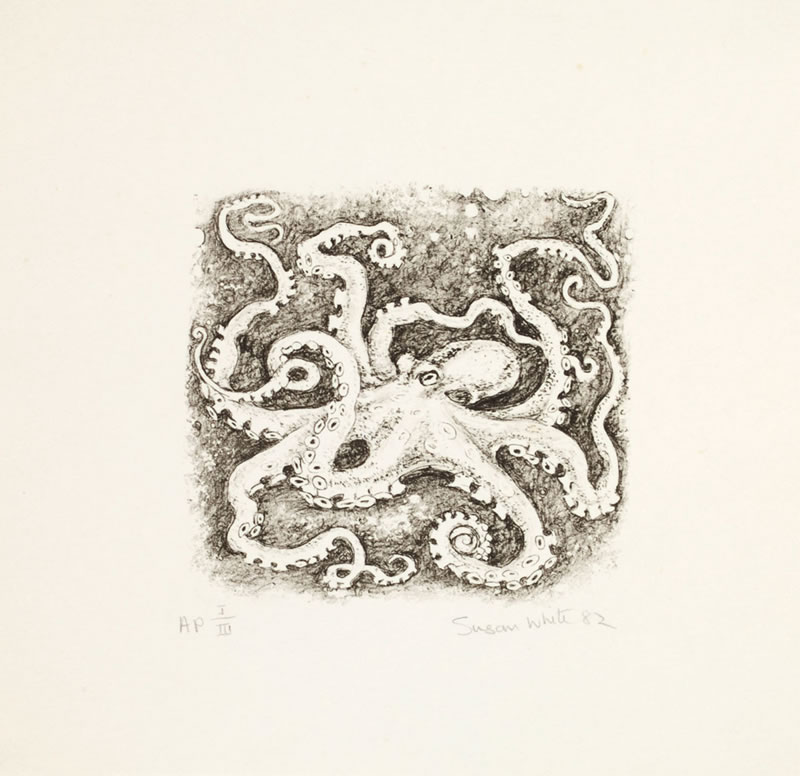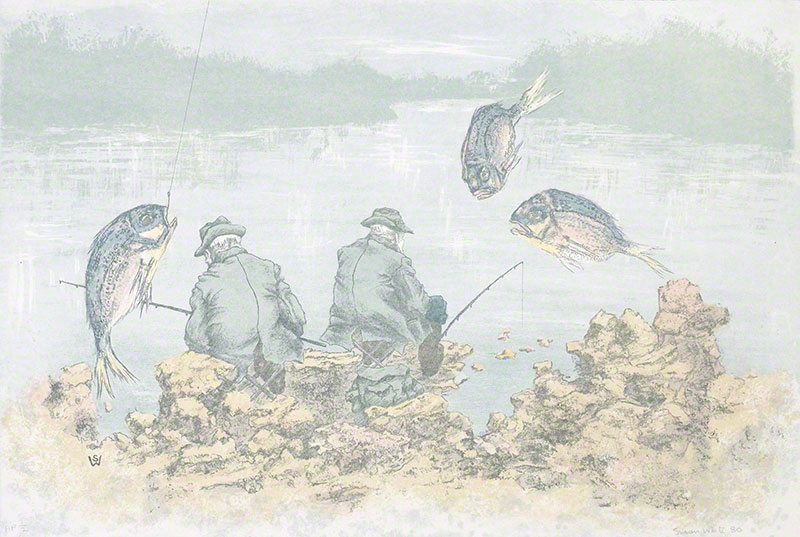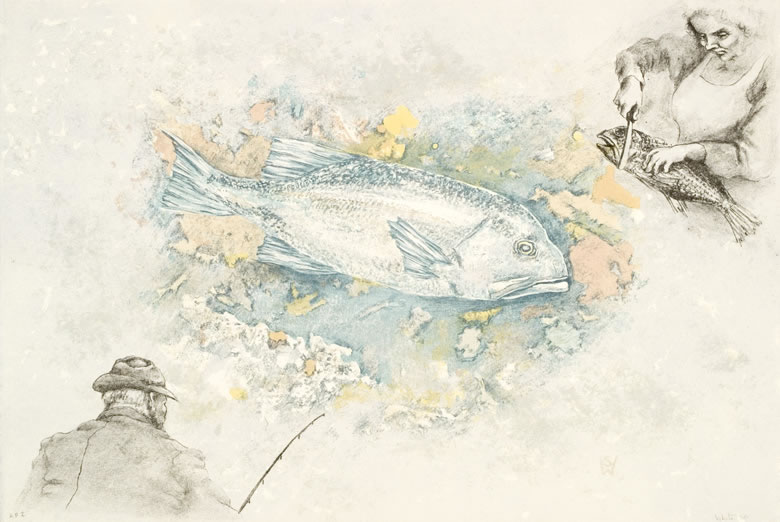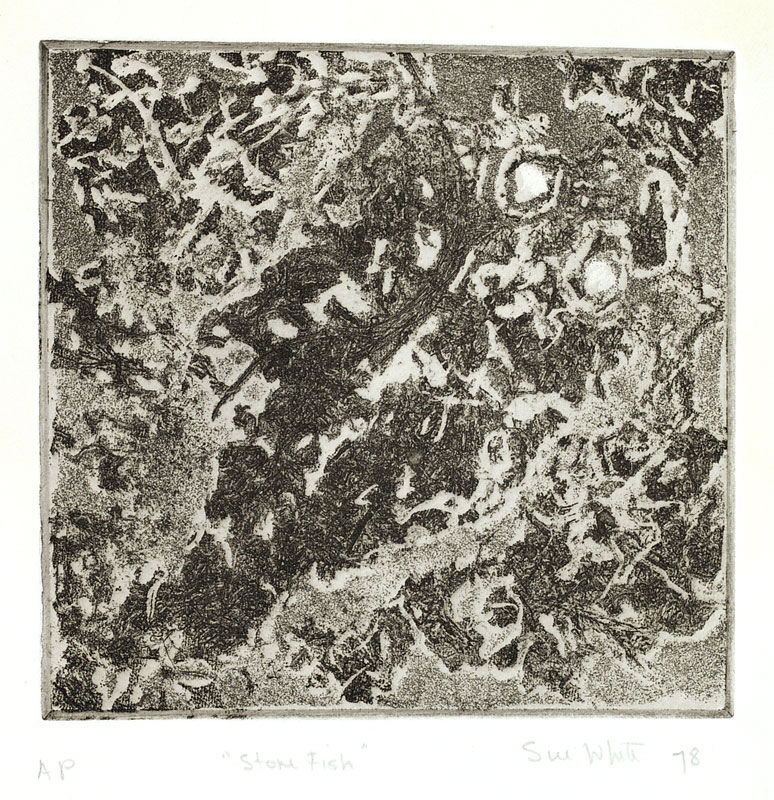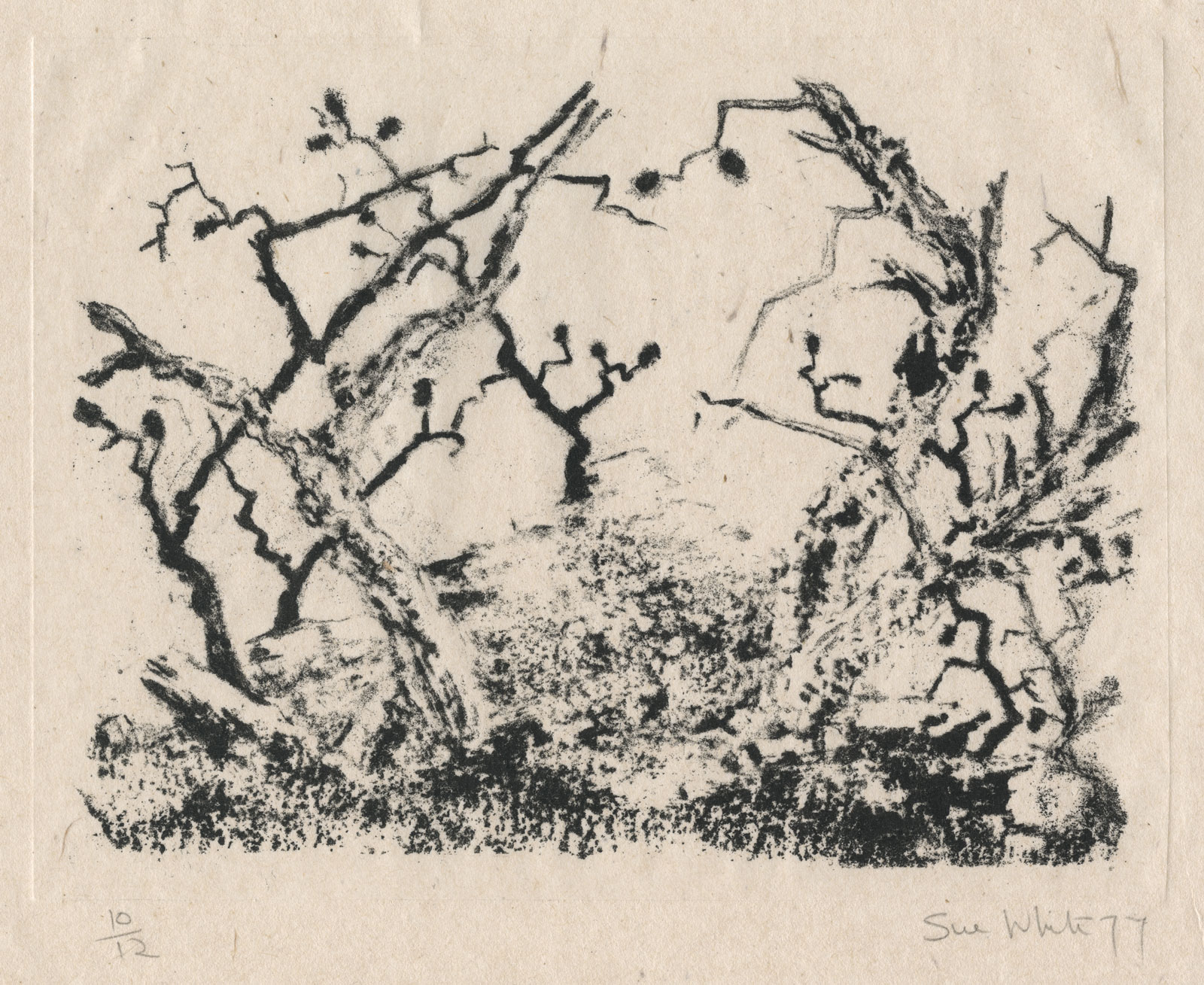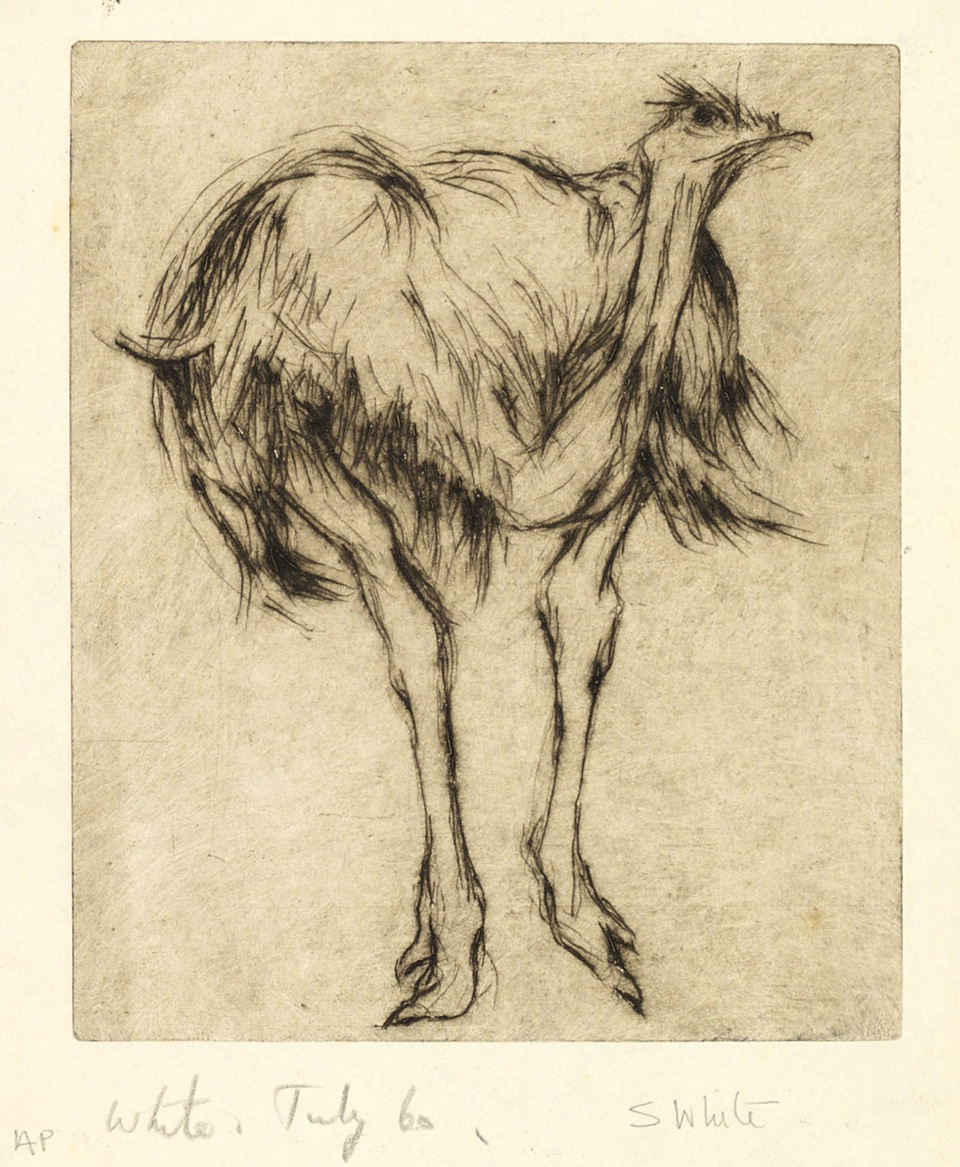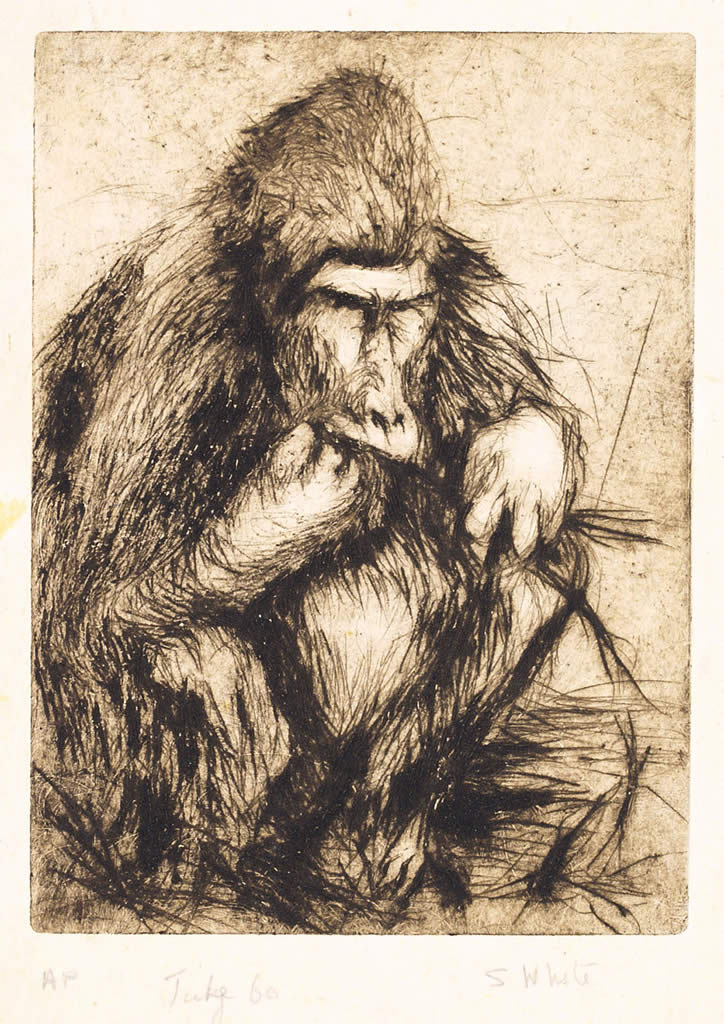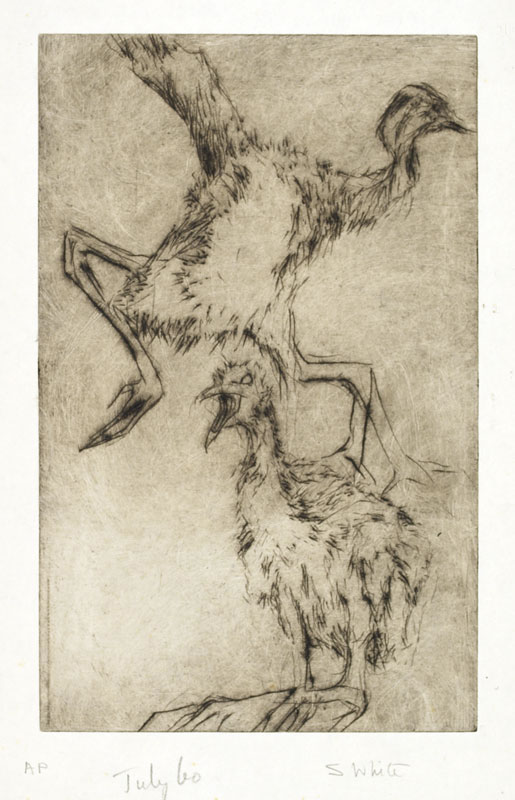Prints : Nature
Susan White produces her own prints, by hand, in her studio. A complete list of the artist's editioned prints (about 100) is in The Printworld Directory of Contemporary Prints and Prices (2006).
Since 1980, White's prints have represented Australia in over 50 international biennales and exhibitions in Japan, Korea, UK, USA, The Netherlands, France, Germany, Italy, Yugoslavia, Poland, etc.
The National Gallery of Australia collection has many of the artist's prints, from 1960 onwards. The lithograph Thieves at the Market, produced while a student, dates from this time.
The freedom and versatility of lithography appeals to the artist. In 1975, she began establishing lithographic facilities in her studio, initially producing prints from metal plates passed through a small wooden wringer on a bed of plywood - Pedestrian Crossing (1977) is an example of this grainier technique.
In 1978, she acquired a professional lithographic printing press, and produced lithographs with up to 15 colours, most requiring separate plates. The Front Veranda (1986) is an example. Later, the artist installed a C19 cast-iron press and equipment for stone lithography. White prints woodcuts and blockprints carved from fibreboard. The artist has produced some etchings, the earliest dating from 1960.
- Jump to:
- Activist Art
- Drawings
- Paintings
- Posters, designs and logos
- Prints
- Sculptures
- Sketches and studies
- Watercolours
Nature: Nature studies in Drawings and Prints include flowers, Australian native flora, plants, vegetables, insects, fish, birds, animals. Still life (nature morte). Sculpture inspired by plant and animal forms, including beans, insects, slugs, worms, starfish.
-
Octopus 1982
lithograph
9 x 9.5 cm (image), Cartridge paper: 20.5 x 15 cm (sheet), Arches Blanc: 25 x 25 cm (sheet)
E-1982-2 -
The Fisherman's Dream 1980
lithograph (bleed print)
41.0 x 61.0 cm (image and sheet)
E-1980-5 -
The Wishful Fisherman 1980
lithograph (bleed print)
41.0 x 61.0 cm (image and sheet)
E-1980-4 -
Stonefish 1978
soft ground etching
29.5 x 22 cm
E-1978-3 -
Blackened Banksias 1977
lithograph (on washi paper)
19.5 x 23.0 cm
E-1977-6 -
Emu 1960
dry point etching (aluminium)
15 x 12.5 cm (image), 25 x 19 cm (sheet)
E-1960-9 -
Baboon / A Monkey 1960
dry point etching (aluminium)
17.5 x 13.5 cm (image), 21.0 x 16.0 cm (var.) (sheet)
E-1960-7 -
Emu Chicks 1960
dry point etching (aluminium)
20.0 x 12.5 cm (image), 23.5 x 16.0 cm (var.) (sheet)
E-1960-1
